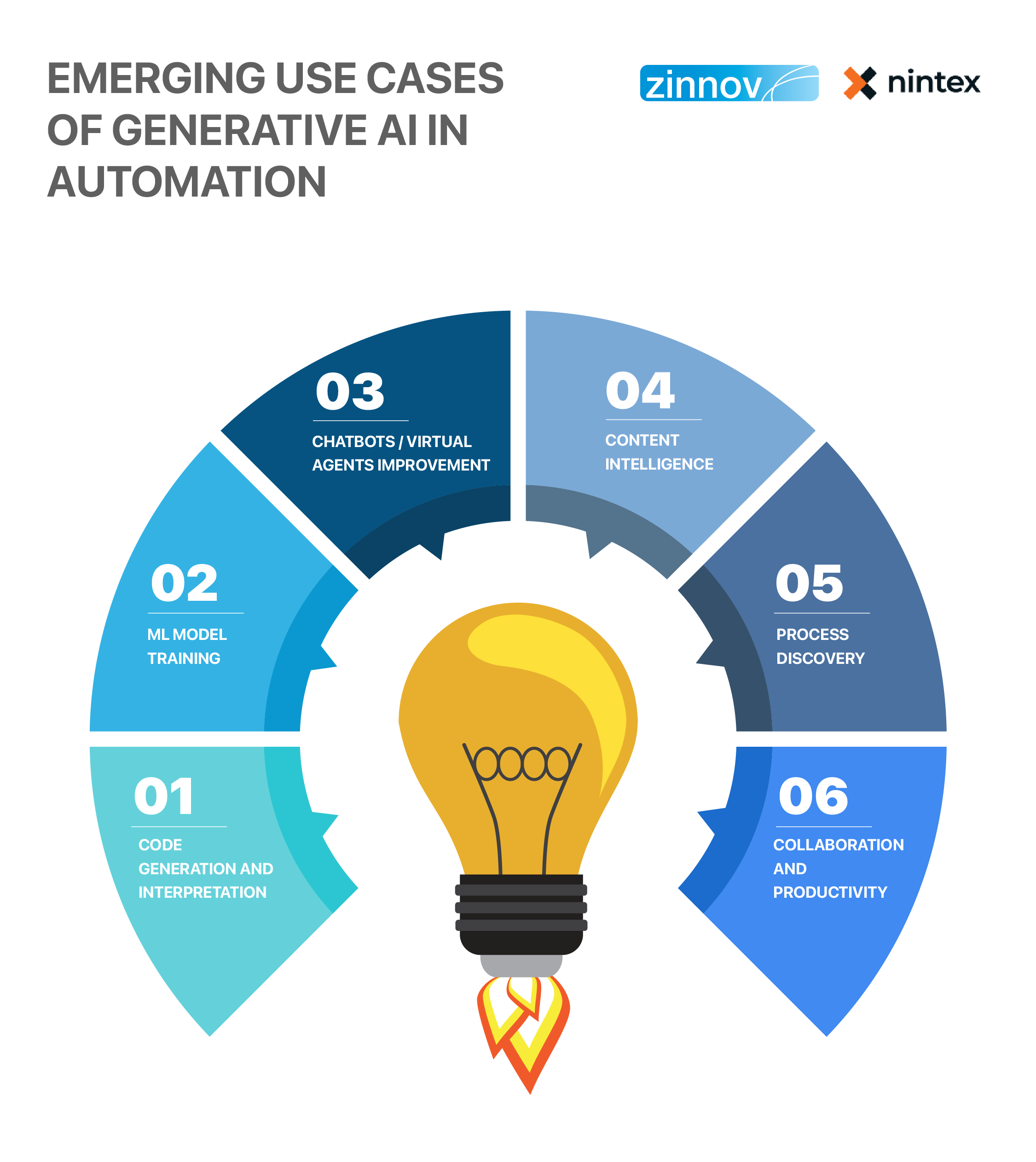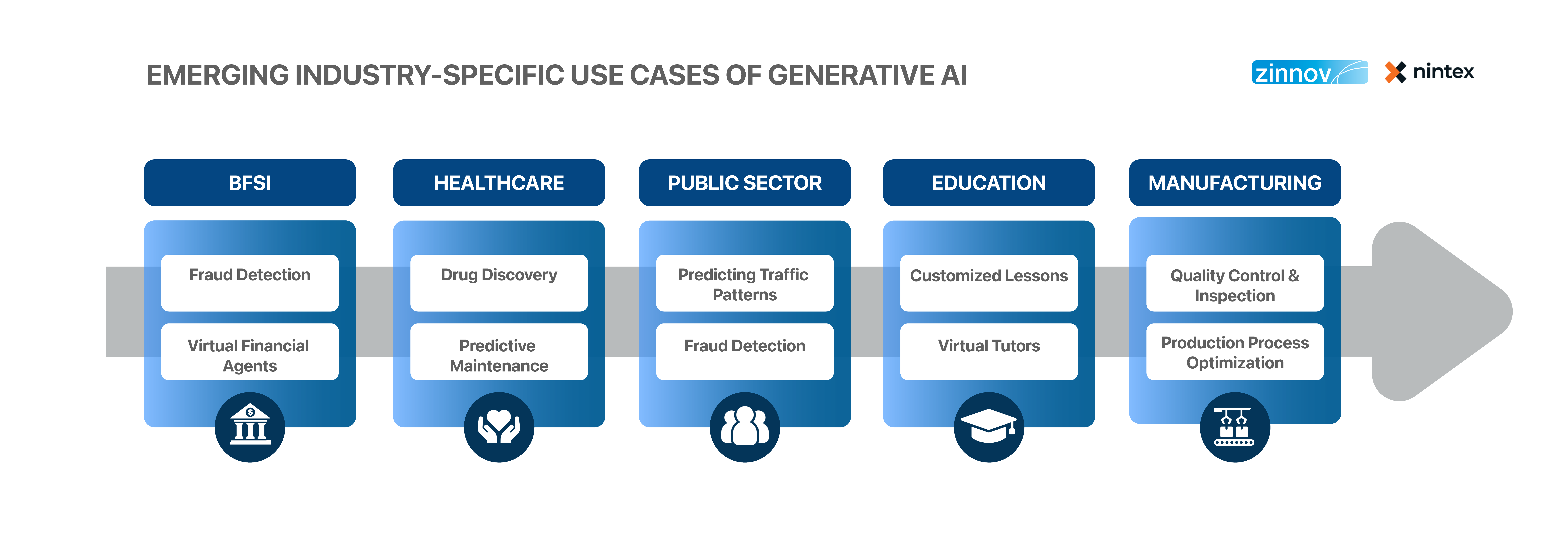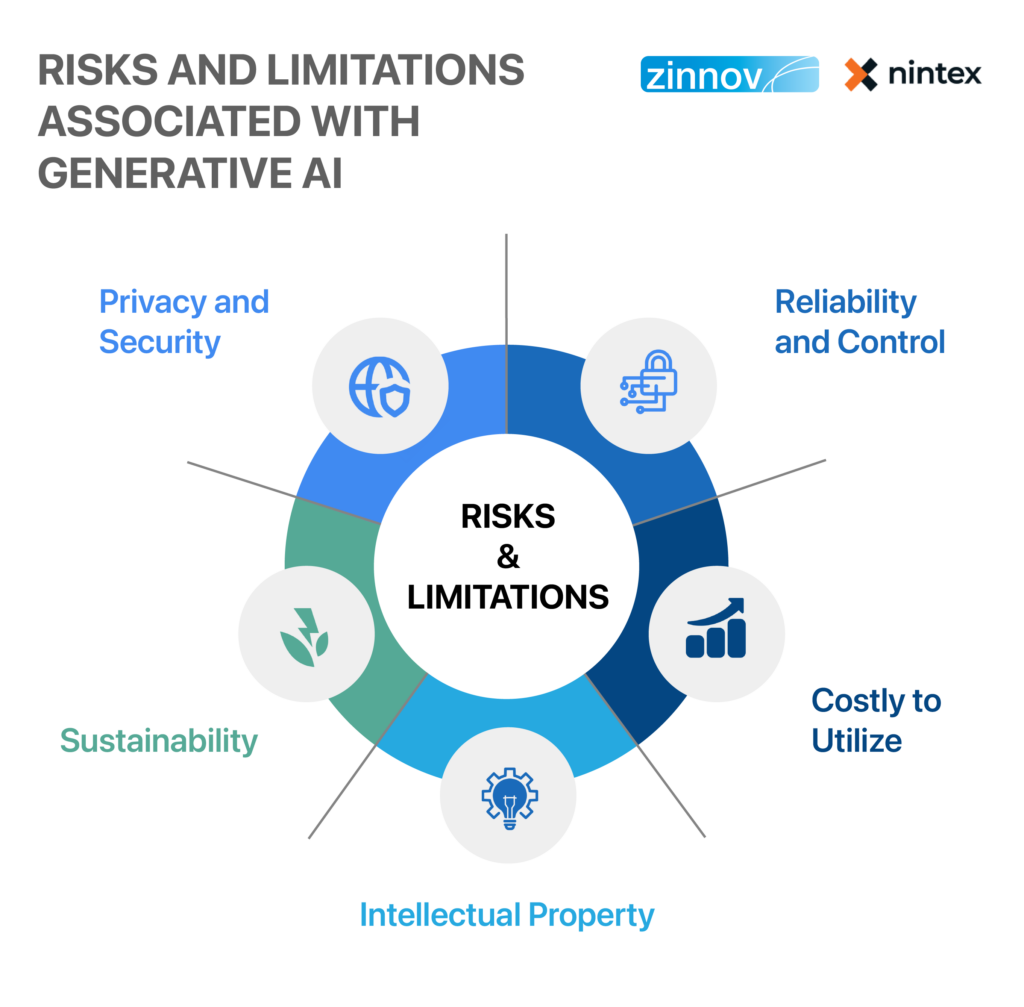|
|
What does the Oracle of Delphi and Generative AI have in common? Just as the Oracle was known for her prophetic abilities and wise counsel, Generative AI, with its ability to analyze vast amounts of data and make predictions, is the modern-day Oracle. Not only does it offer valuable insights, it enables data-driven decision-making and strategic planning.
Generative AI’s posterchild, ChatGPT, which was first launched on November 30th, 2022, quickly gained popularity, with 1 Mn users signing up in just the first week. By now, it has over a 100 Mn user base.
While Generative AI may seem brand new, the first generative models were in fact created in the early 2000s. But the term “Generative AI” wasn’t introduced until 2014. There are two types of widely used Generative AI models:
1. GANs (Generative Adversarial Networks) are generative models that create new information based on existing information like text, images, or audio samples. GANs are Machine Learning (ML) frameworks that can be of two types: generative and discriminative networks. Based on the training provided, generative networks will generate new data based on the same statistics as the training given. A discriminative network will further evaluate these inputs. For example, a discriminative network can predict if an email is spam or not.
2. Transformer-based models were first introduced in 2017 by Google Brain. The Generative Pretrained Transformer (GPT) model uses information gathered from the Internet (articles, whitepapers, news stories, etc.) to generate textual content. GPT1 was introduced in 2018, followed by GPT2 in 2019, GPT3 in 2020, and GPT4 in 2023.
All businesses, including Automation platform companies, are exploring the possible applications and implications of integrating Automation technologies such as Robotics Process Automation (RPA), Intelligent Document Processing (IDP), Intelligent Virtual Agents (IVA), Low Code/No Code (LC/NC), with Generative AI. This reflects the growing awareness of its vast potential, spurring intense competition among prominent players in the industry, akin to an arms race. Here are a few key examples showcasing this:
Microsoft
Other Tech Majors
When we bring together the potential of Generative AI and Automation, we can accelerate the time it takes to launch new innovations. Some examples include:

1. Code Generation and Interpretation: If a developer wants to build an application and requires instructions/code, Generative AI can easily produce the required instructions/generate code scripts in response to natural language prompts. Developers can also test their code by pasting it into a model like ChatGPT and asking questions about what the code does, helping them build applications and workflows faster.
2. ML Model Training: Generative AI can help train Intelligent Automation modules effectively and efficiently through data augmentation, eliminating the need to build costly training datasets and cutting down the development costs of RPA, chatbots/IVA, IDP, and Low Code/No Code solutions. For example, organizations can now use Large Language Models (LLMs) to automate the training of customer intents. Many organizations are experimenting with Generative AI to augment conversational insights for both bot builders and live agents. As the bot hands over a customer service conversation to a live agent, it can generate a summary of what the customer wants and share it with the live agent.
3. Chatbots/Virtual Agents Improvement: Currently, these chatbots rely on manually configured knowledge articles or FAQs to respond to user queries and lack language understanding and context. But with Generative AI models, organizations can produce hyperpersonalized responses for users and help provide a human-like, conversational experience. For example, General Motors (GM) is exploring leveraging ChatGPT for its vehicles. This could enable GM to simplify vehicle usage for customers – ChatGPT could help users understand vehicle features, program functions such as garage door codes, or even help integrate schedules from a calendar, thereby acting as an advanced virtual agent.
4. Content Intelligence: Generative AI can help summarize business documents and extract specific information from a large document (like contract expiry dates, payment terms, payment dates, etc.). It can reconstruct noisy images into a higher resolution image to enhance the data management of structured, semi-structured, and unstructured documents. Generative AI modules can also be trained on enterprise data, such as HR records, to enable them to answer queries pertaining to employees (for example, leaves taken in a year), potential candidates, and other enterprise processes.
5. Process Discovery: This goes a long way in shaping an organization’s Automation journey. Process Intelligence plays a pivotal role here, by identifying bottlenecks and potential opportunities for Automation, creating process maps, and building an Automation pipeline. Generative AI has the potential to accelerate the process of identifying inefficiencies in a user’s journey and providing recommendations.
6. Collaboration and Productivity: Generative AI can be integrated with employees’ mailbox and can recommend ways to effectively draft, summarize, prioritize, and respond to emails based on user needs and prompts. Google is attempting to do this with Gmail and Google Docs.
While the above-mentioned use cases represent some prominent examples of how Generative AI technology can be leveraged, it is worth noting that organizations are currently exploring numerous other possibilities. Some interesting examples of emerging industry-specific use cases include:

1. Fraud Detection: Generative AI can enable an RPA module to share recommendations on how to solve for fraudulent activities.
2. Virtual Financial Agents: Generative AI can enhance the capabilities of banking chatbots and enable them to serve customers better by responding more accurately to customer queries, sharing details, and making recommendations on various product offerings.
Case Example: Stripe, a Fintech start-up, has integrated Open AI’s latest GPT-4 AI model to enhance its services, including fraud detection and customer support.
1. Drug Discovery: Generative AI can accelerate drug development by using advanced algorithms to create new molecules that could be potential drugs. The generated molecules are then thoroughly tested in labs to ensure they are safe and effective before moving on to animal and human trials in clinical settings. This process helps scientists discover new and optimal lead drugs faster and more efficiently.
2. Predictive Maintenance: Generative AI algorithms can predict when equipment will need any maintenance by analyzing the data collated for various medical equipment such as ventilators, imaging equipment, etc.
Case Example: Insilico Medicine, a company specializing in drug discovery and aging research, leverages Generative AI in healthcare, utilizing state-of-the-art algorithms and AI models to accelerate the process of discovering new drugs.
1. Predicting Traffic Patterns: Generative AI is being utilized by governments to predict traffic patterns and optimize traffic flow in real-time, which can minimize traffic congestion, enhance travel times, and increase road safety.
2. Identifying Fraudulent Benefits Claims: By comparing new claims data with existing data to find anomalies, potential instances of fraudulent activities can be identified by Generative AI algorithms.
Case Example: The Singapore government is leveraging Generative AI to anticipate traffic trends and enhance traffic management in real-time by collecting real-time data from various sources and analyzing it to predict traffic congestion and adjust traffic light timings accordingly.
1. Customized Lessons: New educational content, such as quizzes or lesson summaries, can be easily created using Generative AI capabilities. With the help of Generative AI, educators can create interactive and engaging educational content that is customized to the needs of individual students.
2. Virtual Tutors: ChatGPT can enable students to learn through virtual tutors. Even teachers can utilize it as a classroom assistant when delivering lessons to students.
Case Example: Lingvist, a language learning app, has integrated GPT-3 technology to generate personalized language exercises and provide feedback to users. By leveraging GPT-3, Lingvist is able to generate exercises that are tailored to each user’s skill level, interests, and learning style.
1. Quality Control and Inspections: Generative AI can help manufacturers analyze data and reports from quality control inspections, understand patterns in product defects, etc.
2. Optimize the Production Process: Manufacturing firms can optimize their production process by assessing the relevant production data and finding patterns to predict when a failure is likely to occur. Generative AI can also share recommendations on the most effective ways to address such issues.
Case Example: Siemens and Microsoft are working together to assist software developers and automation engineers in speeding up code generation for programmable logic controllers (PLCs) – industrial digital computers used to control and optimize processes in manufacturing plants and machinery by using ChatGPT. By leveraging ChatGPT, engineering teams can save time and reduce the likelihood of errors by generating PLC code through natural language inputs. This collaboration also enables maintenance teams to quickly identify errors and generate step-by-step solutions, enhancing efficiency in troubleshooting.
Although Generative AI presents numerous opportunities, it is not without limitations and risks:

Generative AI is not bias-free. Essentially, it generates information and insights based on human-designed datasets. The same cognitive biases can impact the validity of LLMs. Therefore, it is critical for organizations to train AI models on high-quality datasets that are bias-free.
Generative AI algorithms create new information from existing data. For example, during a demonstration that was meant to show its AI capabilities, Google’s BARD showcased inaccurate information, providing the wrong name of the telescope that captured the first image of an exoplanet.
Generative AI models require powerful GPUs (Graphics Processing Units) for deployment – these can be expensive to purchase and maintain.
Generative AI raises IP concerns, including copyright infringement, plagiarism claims, and ownership disputes over protected works.
Generative AI involves complex computations that demand significant energy consumption and emit greenhouse gases.
Even as some predictions of the Oracle of Delphi may not have come to pass, so will Generative AI have a learning curve, as its LLM learns through the data it is fed. And since Generative AI is an evolving technology, the associated risks and opportunities will shift rapidly in the near future. Every organization and Automation technology provider is exploring new use cases to best harness this technology. There is a lot of potential opportunity with Generative AI, but it comes with a deep responsibility to ensure that no harm is done – whether through biases, unfairness, or imitations.
Governments around the world should look for opportunities to introduce thoughtful legislations and policy interventions that help protect their constituents while working in tandem with technology companies. For organizations, developing a comprehensive strategy that minimizes potential risks and addresses the limitations of Generative AI will be essential, while taking advantage of its ability to improve cost-effectiveness, process efficiencies, and develop new experiences for customers, employees, and partners.